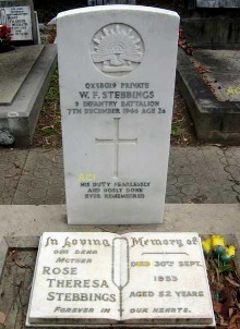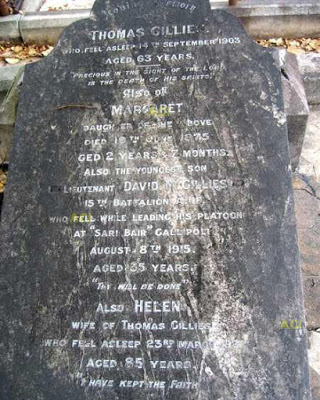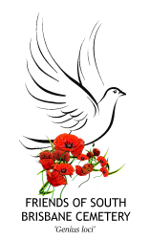The War Graves
The Commonwealth War Graves Commission (CWGC) was established in 1917, and provides headstones for the 1,700,000 men and women of the Commonwealth forces who died from injuries suffered the two world wars.
CWGC has commemorated over one million casualties at military and civil sites in over 150 countries. The CWGC principles are that:
- Each of the dead should be commemorated by name on the headstone or memorial
- Headstones and memorials should be permanent
- Headstones should be uniform

There are 47 registered War Commission graves in South Brisbane Cemetery. Official war graves feature a cross and the relevant insignia.
Army graves have the ‘rising sun’ motif, but if the deceased was in the RAAF or Navy, then the insignias of those forces are shown instead. In rare cases, the regimental colours are displayed on a small badge attached to the headstone.
If their service number starts with QX, it means that they signed up voluntarily in Queensland.

Overseas deaths
In addition to the official war graves, there are also family memorials in the cemetery to local men who died and were interred overseas during the First World War. These usually take the form of naming the deceased, and when and where they died. These were prevalent before the rise in popularity of community cenotaphs.
One marker commemorates David Gillies, a 2nd Lieutenant in the 15th Battalion of the AIF. He was a stockman and the son of Thomas and Helen Gillies of Ruth Street, South Brisbane. Aged 35, he fell while leading his platoon in the unsuccessful push to take the summit of Sari Bair, Gallipoli, in August 1915.
David was one of five men killed by heavy machine gun fire as they attempted to leave a gully. As he has no known grave, the stone above acts as his only personal marker.

Another marker, this one for George Newman, reads that he was:
‘Accidentally killed in France while sleeping in his tent with others at 12-5 A.M. on the 28th August 1917 by the falling of a large elm tree that was blown down by an awful gale raging at the time.’
He was 28 years old and a private in the 4th Pioneer Battalion. George was buried in the Sainte Marie Cemetery, Le Havre, France, and his parents, Job and Wilhelmina Newman of Annerley Road erected this marker in his memory.



